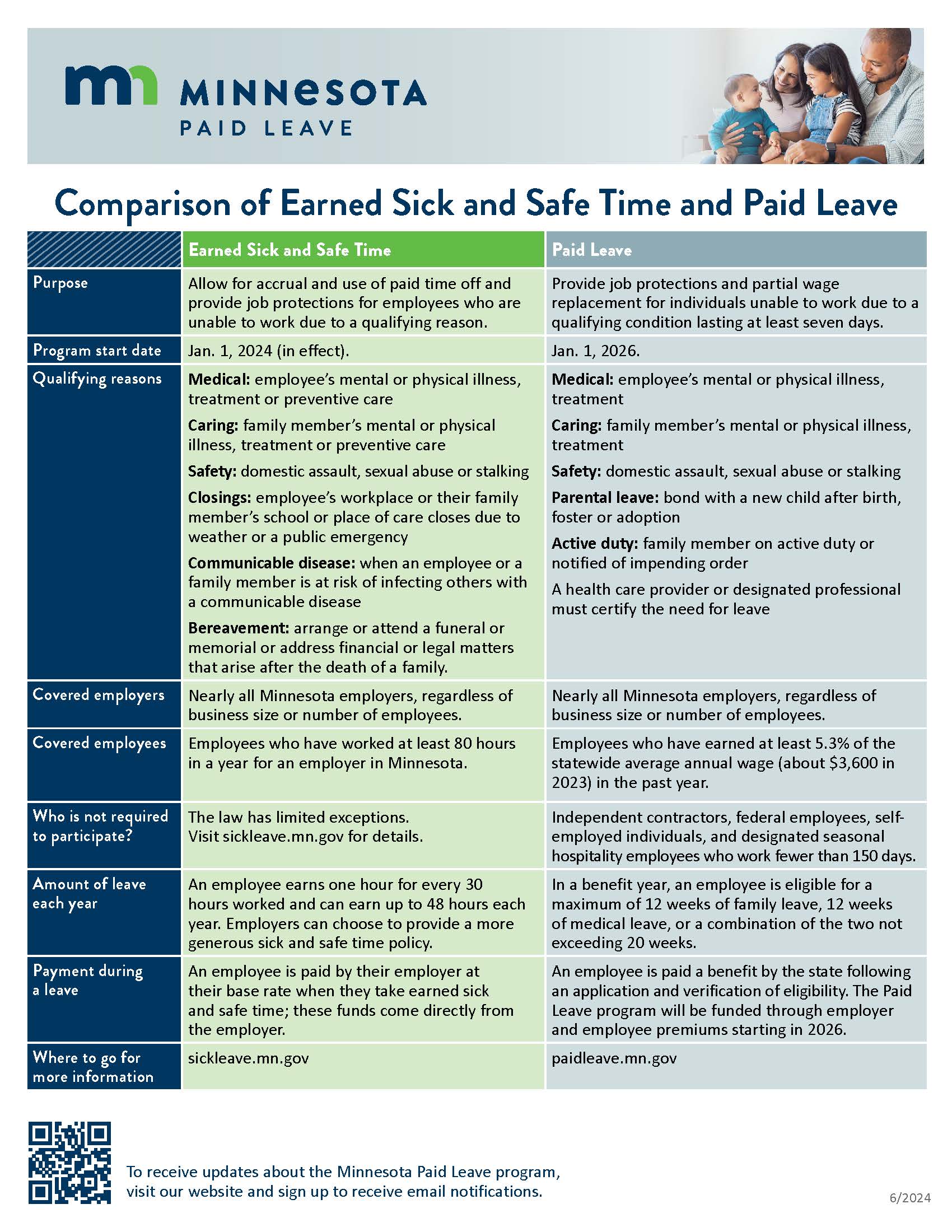September 3, 2025
Minnesota Paid Leave law and work comp
Effective Jan. 1, 2026, a new Minnesota Paid Leave law goes into effect.
The law is distinct from the state’s Earned Sick and Safe Time (ESST) law, which has been on the books since 2024. (See a comparison of the two laws in the chart below.)
Funding comes through premiums split between workers and employers, and employees are eligible for up to 12 weeks of family leave and 12 weeks of medical leave, though the total yearly amount cannot exceed 20 weeks. Job protections are also in place under the statute for employees who have had at least 90 days of employment. The benefits are paid by the state, unless an employer offers an approved equivalent plan.
Employees can apply for leave for a qualifying event, including:
- A serious health condition
- The birth, foster or adoption of a child
- Caring for a loved one (broadly defined under the law)
- Supporting a family member’s active duty or impending order
- Safety concerns, such as domestic violence, sexual assault or stalking
Covered employees are those who work at least 50% of their time in Minnesota. However, there are exceptions for remote employees. Minnesota has an average weekly wage formula in place to determine benefits.
State officials have released an FAQ page to help employers navigate the legislation.
Workers’ compensation considerations
The Minnesota Department of Employment and Economic Development announced that employees cannot receive payments from the new paid leave law while also receiving some other types of benefits. These include:
- Workers’ compensation
- Unemployment insurance payments
- Social Security disability benefits (in most circumstances)
Still, employers should carefully monitor when an employee uses ESST, paid leave or personal time off for a work-related injury.
Paid leave laws in other states
Of SFM’s core states, only Minnesota has passed paid leave laws. However, similar legislation has been introduced elsewhere in recent years, including:
Conclusion
Minnesota employers should monitor any additional information coming from state officials, as well as potential court cases that could further provide clarity between the paid leave law and workers’ compensation benefits.
It is strongly recommended that employers speak with their employment law counsel regarding administration of Minnesota Paid Leave.
Comparing ESST and Paid Leave






